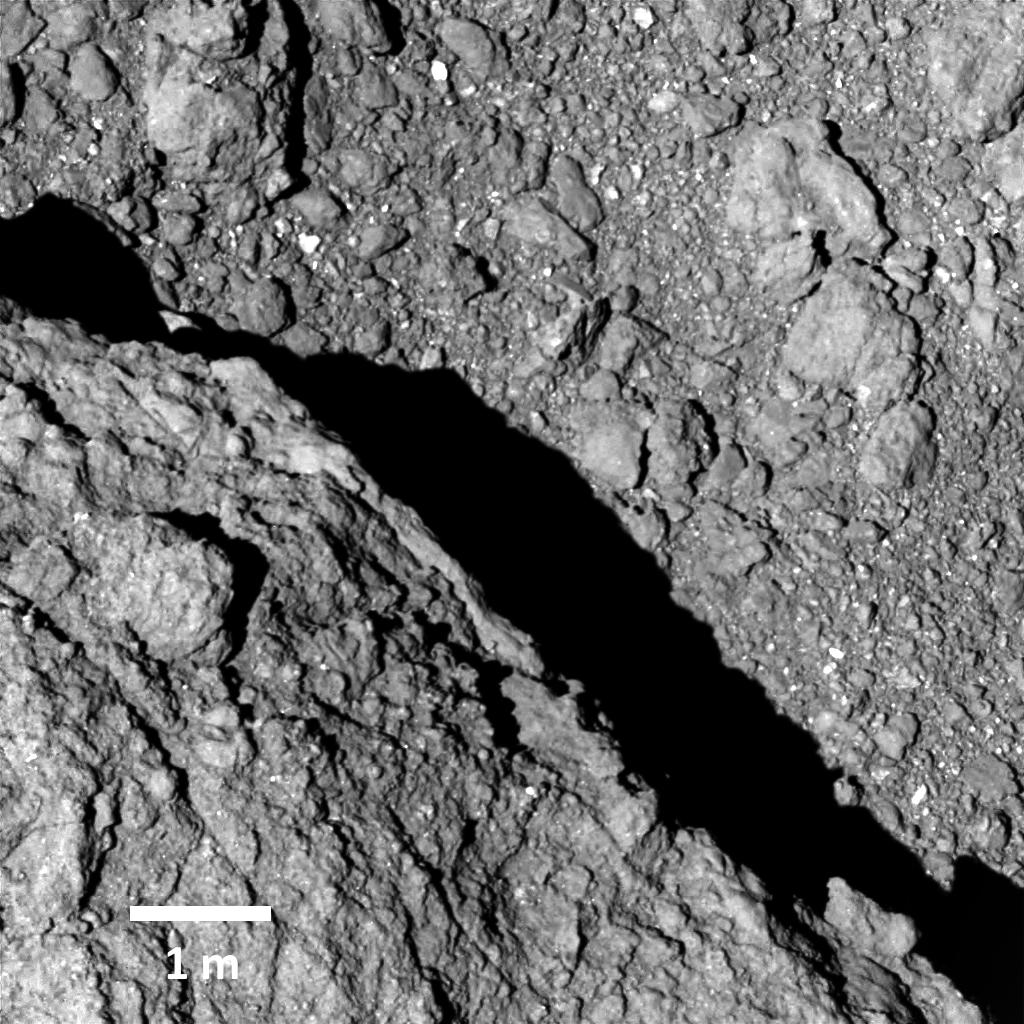Space remains a vast enigma, with some regions so remote that despite our awareness of their existence, their appearance remains largely unknown.
Among these enigmatic celestial bodies is 162173 Ryugu, a near-Earth object classified as a potentially hazardous asteroid of the Apollo group. Measuring approximately 900 meters in diameter, Ryugu belongs to the rare spectral type Cb, exhibiting characteristics of both C-type and B-type asteroids.
Despite its proximity to Earth, Ryugu resides a staggering 223,885,044 kilometers away, placing it beyond our visual reach. However, recent advancements in space exploration have afforded us a clearer glimpse of this enigmatic asteroid, courtesy of NASA.
Shared on Twitter by various accounts, including MAstronomers, the latest image of Ryugu has garnered attention for its unprecedented clarity. One observer noted the eerie backdrop of pitch-black space, while others marveled at the spacecraft’s remarkable journey to Ryugu, where it collected samples before returning to Earth.
Amidst the discourse, questions arose about the asteroid’s peculiar appearance, with some likening it to an underwater scene. Such discussions underscore the profound mystique surrounding celestial bodies and the stark contrast between the relative safety of Earth’s inner solar system and the inhospitable vastness of space.
The fascination with celestial wonders extends beyond Ryugu, as evidenced by NASA’s recent sharing of an image of Titan, Saturn’s largest moon, captured by the James Webb Space Telescope. Although the image remains somewhat blurry, it offers valuable insights into Titan’s unique landscape, characterized by rivers, lakes, and seas composed of hydrocarbons such as ethane and methane.
Furthermore, observations from the Webb Telescope and the Keck Observatory have confirmed seasonal weather patterns on Titan, shedding light on the dynamic processes shaping this intriguing moon.
These discoveries underscore humanity’s insatiable curiosity and the ongoing quest to unlock the mysteries of the cosmos, reminding us of the boundless wonders that await exploration beyond the confines of our home planet.















































